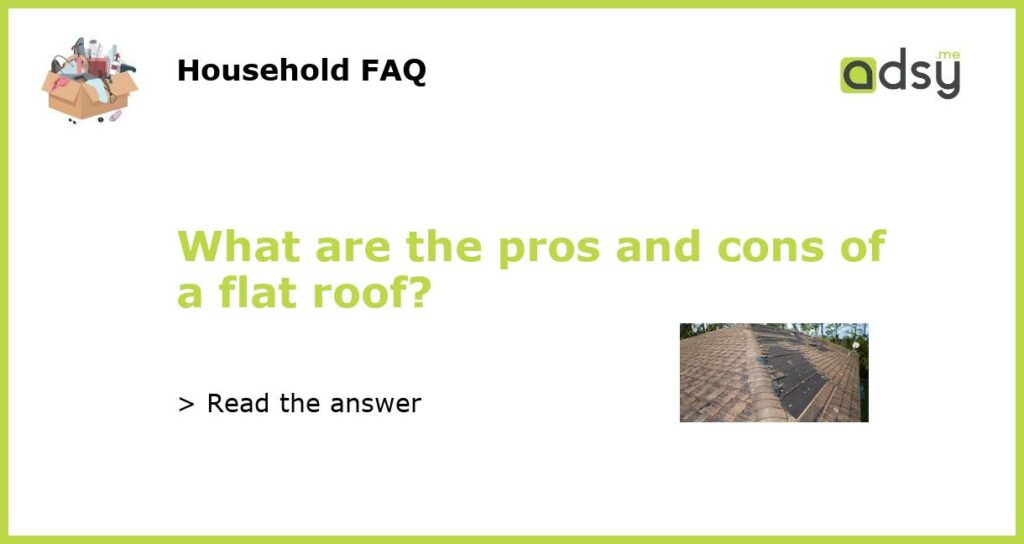Pros and Cons of a Flat Roof
A flat roof is a popular choice for many homeowners and commercial buildings due to its sleek and modern look. However, like any roofing system, there are pros and cons to consider before deciding if a flat roof is the right option for your property. In this article, we will discuss the advantages and disadvantages of a flat roof.
Advantages of a Flat Roof
1. Cost-effective:
A major advantage of a flat roof is its cost-effectiveness. Flat roofs generally require less material and labor compared to pitched roofs, making them a more affordable option.
2. Easy to install:
Flat roofs are relatively simple to install, which reduces the time and labor required for the installation process. This can result in lower installation costs.
3. Versatile:
Unlike pitched roofs, flat roofs offer more versatility in terms of design and usage. They can be used as additional living spaces, such as rooftop gardens or terraces, which can significantly increase the usable space of a property.
4. Accessible:
Due to their flat surface, flat roofs are easier to access and maintain. This makes tasks such as cleaning gutters or performing regular inspections simpler and safer.
Disadvantages of a Flat Roof
1. Poor drainage:
One of the main disadvantages of a flat roof is its poor drainage system. Without proper slope, water can accumulate, leading to leaks and potential structural damage. It is crucial to install an effective drainage system, such as gutters and downspouts, to prevent water pooling on the roof.
2. Less insulation:
Flat roofs tend to have less insulation compared to pitched roofs. This can result in higher energy consumption for heating and cooling, as flat roofs are more susceptible to heat loss during winter and heat gain during summer.
3. Limited lifespan:
Flat roofs generally have a shorter lifespan compared to pitched roofs. The constant exposure to the elements, including UV rays, rain, and snow, can cause the roofing materials to deteriorate more quickly. Regular inspections and maintenance are essential to prolong the lifespan of a flat roof.
4. Vulnerable to leaks:
Flat roofs are prone to developing leaks, especially if they are not properly maintained. Over time, small cracks or gaps can form in the roofing materials, allowing water to penetrate and cause damage to the underlying structure. Prompt repairs and routine maintenance can help prevent leaks.
A flat roof has its advantages and disadvantages. It is cost-effective, easy to install, versatile, and accessible. However, it can also have issues with poor drainage, less insulation, limited lifespan, and vulnerability to leaks. Before choosing a flat roof for your property, it is important to consider these pros and cons carefully and consult with a professional roofer to make an informed decision.

